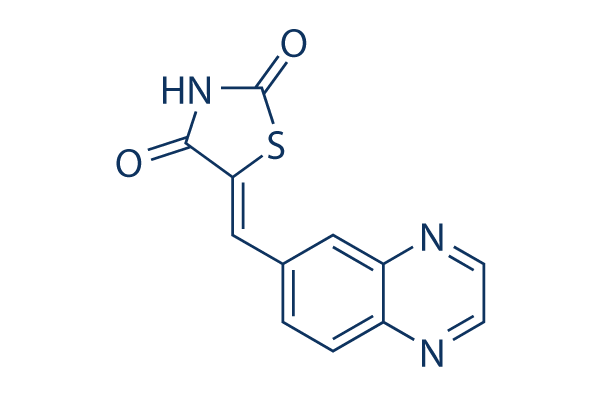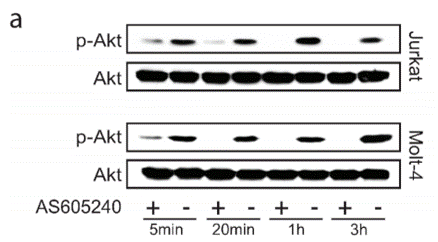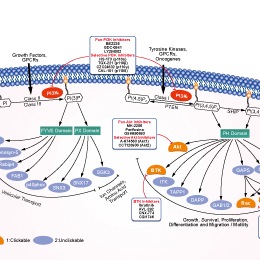
- Bioactive Compounds
- By Signaling Pathways
- PI3K/Akt/mTOR
- Epigenetics
- Methylation
- Immunology & Inflammation
- Protein Tyrosine Kinase
- Angiogenesis
- Apoptosis
- Autophagy
- ER stress & UPR
- JAK/STAT
- MAPK
- Cytoskeletal Signaling
- Cell Cycle
- TGF-beta/Smad
- DNA Damage/DNA Repair
- Compound Libraries
- Popular Compound Libraries
- Customize Library
- Clinical and FDA-approved Related
- Bioactive Compound Libraries
- Inhibitor Related
- Natural Product Related
- Metabolism Related
- Cell Death Related
- By Signaling Pathway
- By Disease
- Anti-infection and Antiviral Related
- Neuronal and Immunology Related
- Fragment and Covalent Related
- FDA-approved Drug Library
- FDA-approved & Passed Phase I Drug Library
- Preclinical/Clinical Compound Library
- Bioactive Compound Library-I
- Bioactive Compound Library-Ⅱ
- Kinase Inhibitor Library
- Express-Pick Library
- Natural Product Library
- Human Endogenous Metabolite Compound Library
- Alkaloid Compound LibraryNew
- Angiogenesis Related compound Library
- Anti-Aging Compound Library
- Anti-alzheimer Disease Compound Library
- Antibiotics compound Library
- Anti-cancer Compound Library
- Anti-cancer Compound Library-Ⅱ
- Anti-cancer Metabolism Compound Library
- Anti-Cardiovascular Disease Compound Library
- Anti-diabetic Compound Library
- Anti-infection Compound Library
- Antioxidant Compound Library
- Anti-parasitic Compound Library
- Antiviral Compound Library
- Apoptosis Compound Library
- Autophagy Compound Library
- Calcium Channel Blocker LibraryNew
- Cambridge Cancer Compound Library
- Carbohydrate Metabolism Compound LibraryNew
- Cell Cycle compound library
- CNS-Penetrant Compound Library
- Covalent Inhibitor Library
- Cytokine Inhibitor LibraryNew
- Cytoskeletal Signaling Pathway Compound Library
- DNA Damage/DNA Repair compound Library
- Drug-like Compound Library
- Endoplasmic Reticulum Stress Compound Library
- Epigenetics Compound Library
- Exosome Secretion Related Compound LibraryNew
- FDA-approved Anticancer Drug LibraryNew
- Ferroptosis Compound Library
- Flavonoid Compound Library
- Fragment Library
- Glutamine Metabolism Compound Library
- Glycolysis Compound Library
- GPCR Compound Library
- Gut Microbial Metabolite Library
- HIF-1 Signaling Pathway Compound Library
- Highly Selective Inhibitor Library
- Histone modification compound library
- HTS Library for Drug Discovery
- Human Hormone Related Compound LibraryNew
- Human Transcription Factor Compound LibraryNew
- Immunology/Inflammation Compound Library
- Inhibitor Library
- Ion Channel Ligand Library
- JAK/STAT compound library
- Lipid Metabolism Compound LibraryNew
- Macrocyclic Compound Library
- MAPK Inhibitor Library
- Medicine Food Homology Compound Library
- Metabolism Compound Library
- Methylation Compound Library
- Mouse Metabolite Compound LibraryNew
- Natural Organic Compound Library
- Neuronal Signaling Compound Library
- NF-κB Signaling Compound Library
- Nucleoside Analogue Library
- Obesity Compound Library
- Oxidative Stress Compound LibraryNew
- Plant Extract Library
- Phenotypic Screening Library
- PI3K/Akt Inhibitor Library
- Protease Inhibitor Library
- Protein-protein Interaction Inhibitor Library
- Pyroptosis Compound Library
- Small Molecule Immuno-Oncology Compound Library
- Mitochondria-Targeted Compound LibraryNew
- Stem Cell Differentiation Compound LibraryNew
- Stem Cell Signaling Compound Library
- Natural Phenol Compound LibraryNew
- Natural Terpenoid Compound LibraryNew
- TGF-beta/Smad compound library
- Traditional Chinese Medicine Library
- Tyrosine Kinase Inhibitor Library
- Ubiquitination Compound Library
-
Cherry Picking
You can personalize your library with chemicals from within Selleck's inventory. Build the right library for your research endeavors by choosing from compounds in all of our available libraries.
Please contact us at info@selleckchem.com to customize your library.
You could select:
- Antibodies
- Bioreagents
- qPCR
- 2x SYBR Green qPCR Master Mix
- 2x SYBR Green qPCR Master Mix(Low ROX)
- 2x SYBR Green qPCR Master Mix(High ROX)
- Protein Assay
- Protein A/G Magnetic Beads for IP
- Anti-Flag magnetic beads
- Anti-Flag Affinity Gel
- Anti-Myc magnetic beads
- Anti-HA magnetic beads
- Poly DYKDDDDK Tag Peptide lyophilized powder
- Protease Inhibitor Cocktail
- Protease Inhibitor Cocktail (EDTA-Free, 100X in DMSO)
- Phosphatase Inhibitor Cocktail (2 Tubes, 100X)
- Cell Biology
- Cell Counting Kit-8 (CCK-8)
- Animal Experiment
- Mouse Direct PCR Kit (For Genotyping)
- New Products
- Contact Us
research use only
AS-605240 PI3K inhibitor
AS-605240 selectively inhibits PI3Kγ with IC50 of 8 nM, over 30-fold and 7.5-fold more selective for PI3Kγ than PI3Kδ/β and PI3Kα in cell-free assays, respectively.

Chemical Structure
Molecular Weight: 257.27
Purity & Quality Control
Batch:
Purity:
99.85%
99.85
Related Products
| Related Targets | p110α p110β p110δ p110γ C2β Vps34 | Click to Expand |
|---|---|---|
| Related Products | LY294002 3-Methyladenine (3-MA) Dactolisib (BEZ235) Pictilisib (GDC-0941) Wortmannin Buparlisib (BKM120) PI-103 TGX-221 ZSTK474 Omipalisib (GSK2126458) A66 PF-04691502 PIK-75 HCl IC-87114 740 Y-P (PDGFR 740Y-P) Taselisib (GDC 0032) SAR405 Apitolisib (GDC-0980) VPS34-IN1 PIK-90 | Click to Expand |
| Related Compound Libraries | Kinase Inhibitor Library PI3K/Akt Inhibitor Library Apoptosis Compound Library Cell Cycle compound library NF-κB Signaling Compound Library | Click to Expand |
Signaling Pathway
Cell Culture and Working Concentration
| Cell Lines | Assay Type | Concentration | Incubation Time | Formulation | Activity Description | PMID |
|---|---|---|---|---|---|---|
| RAW264.7 cells | Function assay | Inhibition of MCP1-induced chemotaxis in mouse RAW264.7 cells, IC50=5.31 μM | ||||
| Click to View More Cell Line Experimental Data | ||||||
Mechanism of Action
| Features | The most potent member of a new class of PI3Kγ-selective inhibitors. | ||||||||
|---|---|---|---|---|---|---|---|---|---|
| Targets |
|
In vitro |
||||
| In vitro | AS-605240 is an ATP-competitive PI3Kγ inhibitor, with Ki values of 7.8 nM. This compound is isoform-selective, for it also inhibits PI3Kα, β, and δ, with IC50 of 60, 270, and 300 nM, respectively. It inhibits C5a-mediated PKB phosphorylation with IC50 of 90 nM. In bone marrow-derived monocytes (BMDMs), this chemical (1 μM) blocks MCP-1- or CSF-1-induced PKB phosphorylation. [1] At SC-CA1 synapses in mice, this compound (100 nM) eliminates NMDAR LTD, without affecting mGluR LTD, depotentiation, and LTP. [2] | |||
|---|---|---|---|---|
| Kinase Assay | In vitro PI3K lipid kinase assay | |||
| (1) For PI3Kγ: human PI3Kγ (100 ng) is incubated at RT with kinase buffer (10 mM MgCl2, 1 mM β-glycerophosphate, 1 mM DTT, 0.1 mM Na3VO4, 0.1% Na Cholate and 15 μM ATP/100 nCi γ[33P]ATP, final concentrations) and lipid vesicles containing 18 μM PtdIns and 250 μM of PtdSer (final concentrations), in the presence of AS-605240 or DMSO. Kinase reaction is stopped by adding 250 μg of Neomycin-coated Scintillation Proximity Assay (SPA) beads. (2) For PI3Kα, β, and δ: varying amounts of ATP are incubated with the different purified PI3K isoforms and saturating concentrations of PtdIns. Consequently, IC50 determinations with PI3Kα, β, and δ, to evaluate inhibitor selectivity are performed as follows: 60 ng of PI3Kα are incubated at RT with kinase buffer, as described for PI3Kγ (but containing 89 μM ATP/300 nCi γ[33P]ATP and no Na Cholate, instead) and lipid vesicles containing 212 μM PtdIns and 58 μM of PtdSer. 100 ng of PI3Kβ are incubated at RT with kinase buffer (containing 70 μM ATP/300 nCi γ[33P]ATP, 4 mM MgCl2 and no Na Cholate) and lipid vesicles containing 225 μM PtdIns and 45 μM of PtdSer. 90 ng of PI3Kδ are incubated with kinase buffer (containing 65 μM ATP/300 nCi γ[33P]ATP, 1 mM MgCl2, and no Na Cholate) and lipid vesicles containing 100 μM PtdIns and 170 μM of PtdSer. The reactions are stopped after 2 hours. | ||||
| Cell Research | Cell lines | RAW264 macrophages | ||
| Concentrations | 1 nM - 10 μM, dissolved in DMSO | |||
| Incubation Time | 30 min | |||
| Method | After a 3-hour starvation in serum-free medium, Cells are pretreated with AS-605240 or DMSO for 30 min and stimulated for 5 min with 50 nM of C5a. PKB phosphorylation is monitored using phosphorylated Ser473 Akt-specific antibody and standard ELISA protocols. |
|||
| Experimental Result Images | Methods | Biomarkers | Images | PMID |
| Western blot | p-AKT / AKT |

|
25869207 | |
In Vivo |
||
| In vivo | In RANTES-induced mouse model of peritonitis, AS-605240 reduces neutrophil chemotaxis with ED50 of 9.1 mg/kg. In a αCII-induced arthritis, this compound (50 mg/kg) protects against αCII-IA symptom. In a mouse model of collagen-induced arthritis, this compound (50 mg/kg) also suppresses joint inflammation and damage. [1] In an obesity-induced diabetes model (ob/ob mice), this compound (10 mg/kg) lowers blood glucose levels, significantly improves both insulin sensitivity and glucose tolerance without affecting body weight. This chemical (30 mg/kg) displays more profound effects with slightly less weight gain. Moreover, this compound reduces the abundance of ATMs and the circulating levels of MCP-1. [3] | |
|---|---|---|
| Animal Research | Animal Models | RANTES-induced mouse model of peritonitis (female Balb/C or C3H), αCII-induced mouse model of arthritis, and collagen-induced mouse model of arthritis (CIA) (male DBA/1) |
| Dosages | 50 mg/kg | |
| Administration | Orally | |
References |
|
Chemical Information
| Molecular Weight | 257.27 | Formula | C12H7N3O2S |
| CAS No. | 648450-29-7 | SDF | Download SDF |
| Synonyms | N/A | ||
| Smiles | C1=CC2=NC=CN=C2C=C1C=C3C(=O)NC(=O)S3 | ||
Storage and Stability
| Storage (From the date of receipt) | |||
|
In vitro |
DMSO : 1 mg/mL ( (3.88 mM) Moisture-absorbing DMSO reduces solubility. Please use fresh DMSO.) Water : Insoluble Ethanol : Insoluble |
Molecular Weight Calculator |
|
In vivo Add solvents to the product individually and in order. |
In vivo Formulation Calculator |
|||||
Preparing Stock Solutions
Molarity Calculator
In vivo Formulation Calculator (Clear solution)
Step 1: Enter information below (Recommended: An additional animal making an allowance for loss during the experiment)
mg/kg
g
μL
Step 2: Enter the in vivo formulation (This is only the calculator, not formulation. Please contact us first if there is no in vivo formulation at the solubility Section.)
% DMSO
%
% Tween 80
% ddH2O
%DMSO
%
Calculation results:
Working concentration: mg/ml;
Method for preparing DMSO master liquid: mg drug pre-dissolved in μL DMSO ( Master liquid concentration mg/mL, Please contact us first if the concentration exceeds the DMSO solubility of the batch of drug. )
Method for preparing in vivo formulation: Take μL DMSO master liquid, next addμL PEG300, mix and clarify, next addμL Tween 80, mix and clarify, next add μL ddH2O, mix and clarify.
Method for preparing in vivo formulation: Take μL DMSO master liquid, next add μL Corn oil, mix and clarify.
Note: 1. Please make sure the liquid is clear before adding the next solvent.
2. Be sure to add the solvent(s) in order. You must ensure that the solution obtained, in the previous addition, is a clear solution before proceeding to add the next solvent. Physical methods such
as vortex, ultrasound or hot water bath can be used to aid dissolving.
Tech Support
Answers to questions you may have can be found in the inhibitor handling instructions. Topics include how to prepare stock solutions, how to store inhibitors, and issues that need special attention for cell-based assays and animal experiments.
Tel: +1-832-582-8158 Ext:3
If you have any other enquiries, please leave a message.
* Indicates a Required Field






































